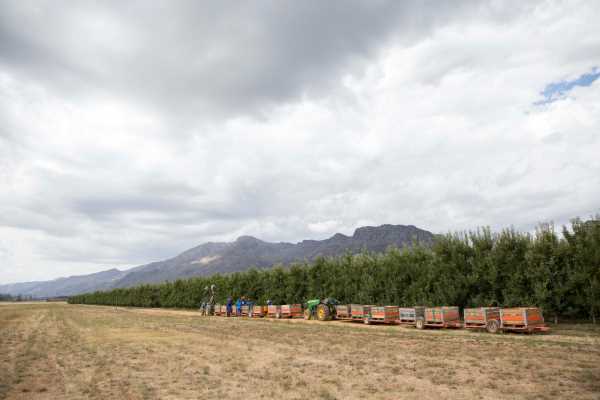In the midst of an unprecedented economic and health crisis one sector in our economy has outshone the rest. The agricultural sector expanded by almost 28% in the first quarter compared to the same period in 2019 and 15.1% in the second quarter.
Agriculture was the only one of nine sectors in the economy to show GDP growth in the second quarter. Manufacturing and trade contracted by more than 10% followed by transport and communication and mining with a contraction of around 6% during the same quarter.
The main reason for the growth in agriculture was higher production of animal products, horticulture and field crops. During the initial strict Covid-19 lockdown it was one of very few sectors in the economy that was allowed to continue operating, excluding a few but important industries such as the wine, tobacco and hunting industries.
However, the rest of the economy continues to struggle. In 2016 the country achieved growth of almost 6%. In 2019 it was down to 0.2%. Before the Covid-19 pandemic outbreak and the strict regulations that brought most economic activities to a grinding halt National Treasury forecasted lacklustre growth of 0.9%.
FNB has revised its growth projections downwards substantially and expects a contraction of 8.2% for this year, with a slight increase to 2.8% in 2021 before slumping to 0.9% in 2022. This year’s contraction will be the biggest in nearly 90 years.
Although not all our economic woes can be attributed to the pandemic, it does seem to have been the last straw that broke the camel’s back, Dawie Maree, Head: Agriculture Information and Marketing at FNB said during a recent webinar.
The agricultural sector has over time shown resilience in the face of economic, weather and disease crises. Despite its positive rebound in the first quarter this year, and good growth prospects for the rest of 2020, several systemic risks remain that impact the future profitability and sustainability of agricultural producers.
Currency volatility
The exchange rate remains the joker in the pack due to local and global factors. It continues to be a major risk as it impacts current and future decision making, Maree said. FNB considers the fair value of the currency to be R15.30 to the dollar. However, due to SA’s local fiscal risks the currency will trade above that. “We expect it to trade between R16.50 and R17.50 but closer to the mid-point of R17 to the dollar. The upcoming US elections and the impact on the dollar will have follow-through effects on the Rand and other emerging market currencies,” Maree noted.
According to Paul Makube, Senior Agricultural Economist at FNB Agri-Business, both summer and winter crops had a good finish for 2020. Total maize production was up 38% year-on-year, groundnuts was up 162% year-on-year, sunflower 16% and sorghum 15%.
Prices in the livestock markets bucked the trend for winter and defied the Covid-19 pandemic. The price for weaners was up 25% year-on-year, feeder lambs 25% and pork 6%.
Though dam levels were slightly lower at 65.7% compared to 66.8% during September last year, these are good levels for this time of the year as the new rainfall season begins. Of the top ten dams by capacity, eight were above 80% full while only two remained below the 50% level namely the Pongolapoort dam which was 40% full this year compared to 43% last year. The Vaal Dam dropped from 57.6% in September last year to a mere 33% during the same time this year.
Christien Engelbrecht, Meteorologist at the South African Weather Service, said the winter rainfall season started late, but during June, July, and August there had been fairly good rainfall over most of the winter rainfall region.
The south western part of the country had good rainfall conditions during the winter of 2020. However, drought conditions in the Eastern Cape where there are problems with water storage, especially in the Nelson Mandela metro and the wider region, has placed the Kouga Dam under pressure. The dam was less than 7% full at the end of August.
The Weather Service has observed La Nina-like conditions in the Pacific Ocean for the summer rainfall areas. “That means we can expect above normal rainfall for most of the Southern Africa summer rainfall region.”
The current sea surface temperatures show cooler than normal conditions in the Pacific Ocean which is a good predictor for what SA can expect over the summer rainfall areas.
The weather outlook should be favourable for crop production over most parts of the summer rainfall region, but lesser over the north eastern parts of the country and KwaZulu-Natal.
“The cooler season should result in less heat stress, especially in areas where farmers are concerned about a mid-summer drought. All indications are that the chances of that is smaller than in previous summer seasons,” Engelbrecht said.
Makube believes the agriculture GDP growth momentum will continue into 2021. He is also of the view that food inflation will remain “subdued” and that interest rates – currently at record lows – will remain low in the foreseeable future. FNB expects another cut of 25 basis points in interest rates and only expect increases again in late 2022. This bodes well for consumers and producers, according to Maree.
He is extremely optimistic about the future of the agricultural sector and its growth trajectory. However, it remains highly dependent on greater policy certainty regarding land reform, labour stability, and access to reliable and affordable energy sources.
According to Lianne Jones, Country Manager for the Produce Marketing Association, only 8% of farmers are millennials, but they are driving 75% of the technological change in the farming industry. “They are using smart phones, aggregating and analysing data and developing effective short cuts to make tasks more efficient. They are going to change the face of agriculture.”
Covid-19 has exponentially increased online shopping. The plethora of home deliveries is a trend that is here to stay. “We are also seeing an ongoing shift away from traditional retail to direct to consumer shopping,” Jones noted.
Globally 40% of brands are now selling directly to the consumer. These sales are predicted to reach $130bn by 2025. Distribution centres are set to become centralised hubs that different businesses will be using to aggregate and send out their products. This will speed up mechanisation and it is expected that 4m robots will be in 50,000 warehouses globally by 2025.








